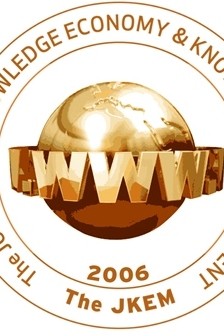A Framework For Systematic Application And Measurement Of The İnnovation Management Processes
Innovation, Framework, Measurement, Innovation Balanced Scorecard
A Framework For Systematic Application And Measurement Of The İnnovation Management Processes
Innovation, Framework, Measurement, Innovation Balanced Scorecard,
___
- Adams, R., et.al, “Innovation Management Measurement” A Review, International Journal of Management Reviews, 8, 1, 21–47.
- Burgelman, R.A., Christensen, C.M. and Wheelwright, S.C. (2004). “Strategic Management of Technology and Innovation, 4th edition.” New York: McGraw Hill/Irwin.
- Chiesa, V., Coughlan, P. and Voss, A. (1996). “Development of a technical innovation audit.” Journal of Product Innovation Management, 13, 105–136.
- Cooper, R.G. (2008): “Perspective: The Stage-Gate® Idea-to-Launch Process – Update, What’s New, and NextGen Systems”, Journal of Product Innovation Management, Vol. 25, Issue 3, p. 213-232.
- Cooper, R.G. and Kleinschmidt, E.J. (1995). “Benchmarking the firm’s critical success factors in new product development.” Journal of Product Innovation Management, 12, 374–391.
- Cordero, R. (1990). “The measurement of innovation performance in the firm:” an overview. Research Policy, 19, 185–192. .
- Cormican, K. and O’Sullivan, D. (2004). “Auditing best practice for effective product innovation management.” Technovation, 24, 819–829.
- Peter F. Drucker, “The Discipline of Innovation,” Best of HBR,” August 2002, Product 3480, Reprint Number R0208F.
- Fagerberg, J. et al. (2006). Handbook of Innovation, Oxford University Press.
- Frenkel, A., Maital, S. and Grupp, H. (2000). Measuring dynamic technical change: a technometric approach. International Journal of Technology Management, 20, 429–441.
- Hall, D.L. and Nauda, A. (1990). An interactive approach for selecting IR&D projects. IEEE Transactions on Engineering Management, 37, 126–133.
- Holbrook, A. and Wolfe, D. (2002), Knowledge, Clusters and Regional Innovation: Economic Development in Canada, Montréal, Published for the School of Policy Studies, Queen's University by McGill-Queen's University Press.
- Jones, A. (2008). “The Innovation Acid Test, Axminster:” Triarchy Press.
- Goffin, K. and Pfeiffer, R. (1999). “Innovation Management in UK and German Manufacturing Companies.” London: Anglo-German Foundation for the Study of Industrial Society.
- Kaplan, R.S. and Norton, D.P. (1992). “The balanced scorecard – measures that drive performance.” Harvard Business Review, January–February, 71–79.
- Kustoff, R (2008), “What is Organizational Innovation, Ezine Articles. [Online], [Retrieved September 22, 2010]: http://ezinearticles.com/?What-is-Organizational-Innovation? &type=sv&id= 1573028
- Lam, A. (2006), “Organizational Innovation,” Ch5, Handbook of Innovation, Oxford University.
- Mietzner, D. et al.(2009), “Innovation Management Model (IMM),” MS Class Notes, University of Potsdam.
- Nada, N. et al. (2010), “An Integrated Innovation Management Framework,” Proceedings of 5th International Conference on Innovation and Entrepreneurship, Izmir University, 2010.
- O’Sullivan, D. and Dooley, L. (2009), “Applying Innovation,” Sage Publications, Inc.
- Pugh, S. (1981) Concept selection: “a method that works. In: Hubka, V. (ed.), Review of design methodology.” Proceedings international conference on engineering design, March 1981, Rome. Zürich: Heurista, 1981, blz. 497 – 506.
- Rohit Talwar: “Designing Your Future,” ASAE & The Center for Association Leadership, 2008.
- Simon, H. (1969). “The Sciences of the Artificial.” Cambridge: MIT Press.
- Skyrme, D. (2008), Skyrme Associated. [Online], [Retrieved September 22, 2010]: http://www.skyrme.com/resource/kmbasics.htm
- Teece, D. J. (1998). “Design issues for innovative firms: bureaucracy, incentives and industrial structure”. The Dynamic Firm: The Role of Technology, Strategy, Organization and Regions. O. Solvell. Oxford, Oxford University Press.
- Trajtenberg, M. (1990). “A penny for your quotes – patent citations and the value of innovations.” Rand Journal of Economics, 21, 172–187.
- Verhaeghe, A. and Kfir, R. (2002). “Managing innovation in a knowledge intensive technology organization (KITO)”. R&D Management,” 32, 409–417.
- Werner, B.M. and Souder, W.E. (1997). “Measuring R&D performance – state of the art.” Research-Technology Management, 40, 34–42.
- Yayın Aralığı: Yılda 2 Sayı
- Başlangıç: 2006
- Yayıncı: İbrahim Güran YUMUŞAK
Doç. Dr. İbrahim Güran YUMUŞAK, Yrd. Doç. Dr. Mahmut BİLEN
Performance Determination Model Of Human Capital Development For Takaful Industry In Malaysia
Assoc. Prof. Dr.mohamad Bin Abdul HAMID, Assoc. Prof. Dr.nik Mutasim Bin Ab. RAHMAN, Assoc. Prof. Dr.noor İnayah Binti YA’AMOB, Assoc. Prof. Dr.rubayah Binti YAKOB
Contribution Of The New Economy To The Profitability Of Turkish Firms: A Sectoral Analysis
Asst. Prof. Arzdar KIRACI, Murad TİRYAKİOĞLU
Knowledge Management Process And Technology Capacityin A Social Sciences Network Research
Lucia Patricia Carrillo VELÁZQUEZ
Türkiye İle Güney Kore’de Bilim Ve Teknoloji Politikalarının Karşılaştırması
Exploring Writing In The Workplace: Implications For Human Resource Development
Dr.mesut AKDERE, Dr.ross E. AZEVEDO
Kahramanmaraş’ta Faaliyet Gösteren İşletmelerin Yenilik Faaliyetleri Üzerine Bir Alan Çalışması
Yrd. Doç. Dr. Salih YEŞİL, Ömer ÇINAR, Erdem UZUN
Prof.dr. Muammer YAYLALI, Prof.dr. Yusuf AKAN, Cem IŞIK
ABD Yükseköğretimi nde İnternete Dayalı Eğitim: Kamu Sektöründe Liderlik Programı Örneği
